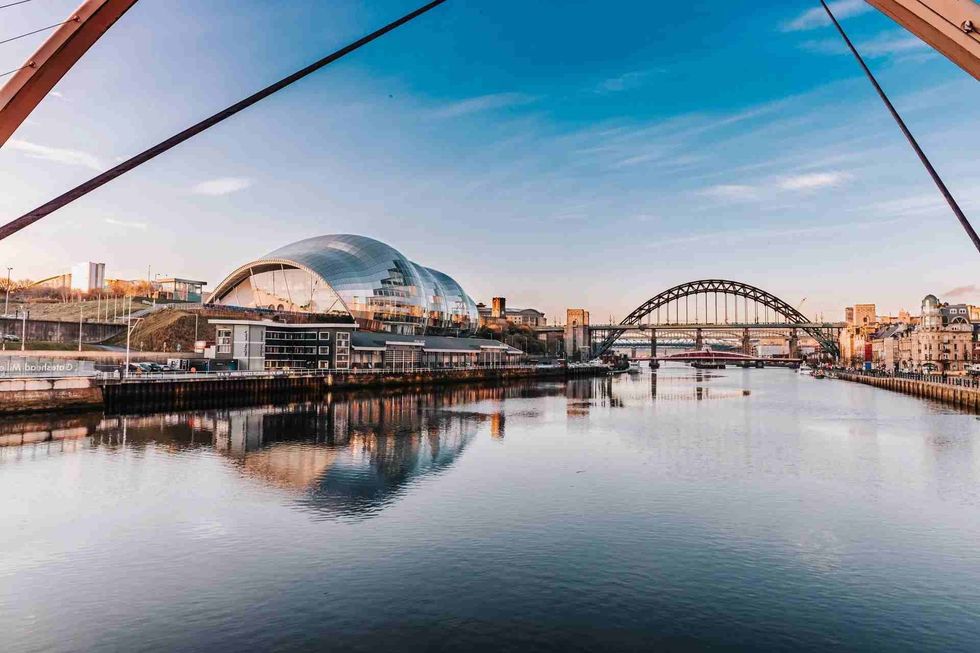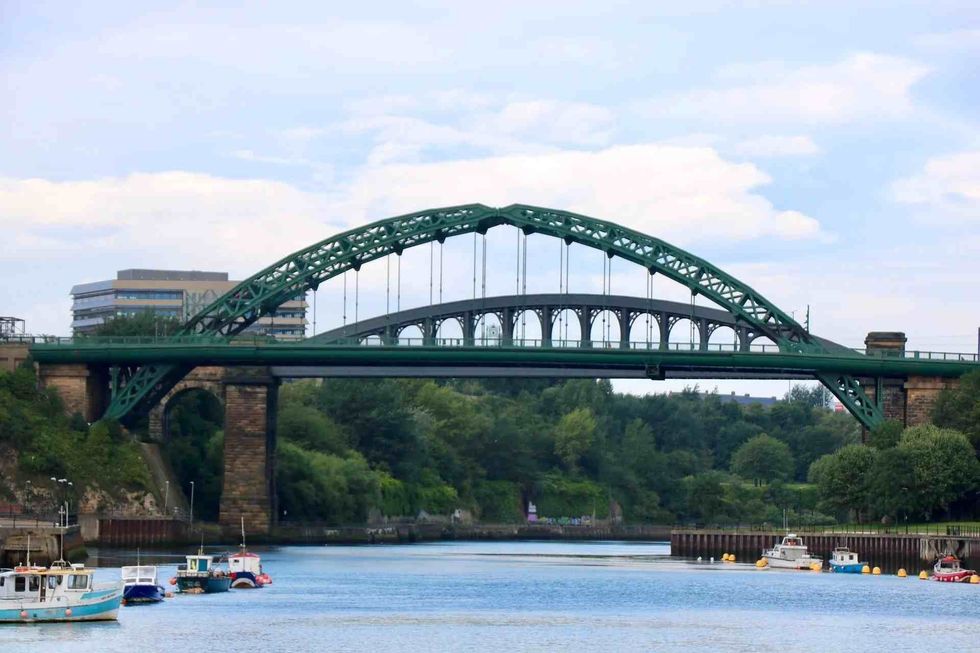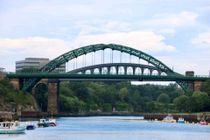201 Facts About Sunderland: Soccer, History, Tourism And More

Sunderland is a port city in North East England.
The city is situated near the River Wear mount and is located within Durham, a historic country. Even though Sunderland is rich in history, the region became a recognized city after Queen Elizabeth II's ascension to the throne in 1992.
Before the recognition as a city, Sunderland was seen as a township that functioned through slow progress with the establishments of a town hall, gas-lighting, exchange building, and police force. The 1831 Cholera outbreak saw the three parishes come together to form the Borough of Sunderland in 1835.
Over the years, Sunderland has developed favorably by introducing the chemical, electronic, paper, and motor manufacturing sectors. The cultural landscape also diversified with the establishment of Victoria Hall, University of Sunderland, Winter Gardens, and the National Glass Centre. The city was named the best place to live in 2018 and the Smart City of the Year in 2020.
Sunderland football club has added more value to the city as it is known as one of the most influential clubs in English football with several domestic titles under their belt. If you plan to visit Sunderland, this article will provide you with plenty of interesting facts and information.
If you like this article on facts about Sunderland, be sure to check out articles on England facts and England culture facts too!
Facts About Sunderland
During World War II, Sunderland was one of the most heavily bombed regions in England. The aftermath of the events saw the town center being rebuilt in boring concrete styles.
Thankfully some of the older structures in the city remain. Holy Trinity, built for an independent Sunderland in 1719, St. Michael's Church, known as Sunderland Minster today, and St. Peter's Church in Monkwearmouth are some of the structures that remain.
Today, only the part of the west wall and the porch of the St. Peter's Church remains.
The Victoria Hall Disaster is one of the worst tragedies in British history. One hundred eighty-three children lost their lives on June 16, 1883, when over 1,000 children who hurried to the staircase for gifts at the Victoria Hall were trapped under it when the stage caved in.
The children, all between the ages of three and 14, died of asphyxiation. Today, a monument to remember the Mowbray Park Victoria Hall disaster victims is located in the North-East stands in Mowbray Park.
The world's first stained glass window was created in Sunderland! The St. Peter's Church made use of the window in 674 AD. Today, only fragments of the original window can be found in the National Glass Centre and the Sunderland Museum and Winter Gardens.
The Sunderland Empire Theatre was founded in 1907 on High Street West and is one of the largest cinema halls between Edinburgh and Manchester. Sunderland Empire was the stage on which Oscar-winning English actress Helen Mirren made her debut.
The theater is also infamous for being the final performance of Sid James, a British comedian who died of a heart attack on stage in 1976.
Sunderland's motto Nil Desperandum Auspice Deo can be found on the Coat of arms of Sunderland City Council. The phrase translates to 'never despair, trust in God.'
Park Lane was chosen as the spot for the establishment of a multimillion-pound transport interchange. The location was made public on May 2, 1999. The Park Lane interchange has won several awards for its creative design.
The residents of Sunderland are informally known as 'Makem,' 'Mackem,' or 'Mak'em.' The terms are also the name of the local accent and dialect. The alternative name used for Mackem is a Wearsider.
Japanese car-makers Nissan became the first Japanese car company to operate in Europe in 1986 when the company chose Sunderland as the location. Today, the company employs around 6,700 people in the Sunderland suburbs.
Things To Do In Sunderland
The city of Sunderland is one of the most amazing cities in England, and it is based by the sea. But even with this location, the popularity of Sunderland as a seaside location is not yet evident!
City council research shows that people do not realize the importance of Sunderland as a seaside spot. The city boasts a gorgeous coastline enjoyed by sailors, surfers, and tourists alike!
The golden sands on the beach are an excellent spot for people to visit with their children, and the sandcastle building is popular on the beach. The presence of lifeguards makes the beaches safer for children.
The seaside also hosts the Sunderland Airshow every year, and impressive displays by aircraft like the Typhoon and Red Arrows are also performed.
The Penshaw Monument in Sunderland stands at the height of 446.1 ft (136 m) and is a replica of the Temple of Hephaestus in Athens. The monument can also be seen on the badge of Southampton A.F.C.
Visitors are allowed to climb a hidden staircase that can take you to the top of the structure to take in the stunning view of the city.
The Sunderland Museum and Winter Garden, founded in 1846, was the first museum to open in the United Kingdom that was funded by the local municipality. A painting of the new South Dock, tasked by the Sunderland Corporation in 1850, was one of the earliest acquisitions made by the museum.
Today, the Sunderland Museum is one of the most famous places in British history and houses the only known specimens of a gliding reptile that was found close to Eppleton Quarry.
Some other notable attractions in the city are the Hylton Castle, the beaches of Seaburn and Roker, the National Glass Centre.
The City of Sunderland has also been awarded esteemed awards for its effort to preserve the natural facilities in the region.
Based on a census of Sunderland, around 70% of the Sunderland residents term themselves as Christians, 22% of residents follow no religion, and the rest of the population is made up of Muslims, Sikhs, Hindus, Buddhists, and Jewish people.
A census in 2001 revealed that there are only 114 people of Jewish faith residing in Sunderland. Before 1750, Sunderland did not have any Jewish community, and this slowly changed after 1750.
Today, the Jewish community is among the minorities as most Jewish people have left the city to settle in larger Jewish communities in the country or abroad. In March 2006, the Sunderland Synagogue located on Ryhope Road was closed.
The city is not as culturally rich as other cities in England as census data shows that around 93.6% of the population comprises White British, with 3.4% being Asian residents.
In 2001, the now abolished Thornholme area, situated to the south of the city center, included the suburbs of Eden Vale, and Ashbrooke was the most ethnically diverse region with 89.4% Whites, 7.8% Asian, and 1.3% mixed-race population.
History Of Sunderland
King Ecgfrith of Northumbria provided land to Benedict Biscop in 674 to build the Wearmouth monastery (St Peter's monastery). This became the first monastery built out of stone in the Northumbria region. Glassmakers were brought in from France by Biscop, which led to the beginning of glass production in Britain.
England's King Athelstan provided land to the Bishop of Durham on the south bank of the Wear river, leading to the origin of the Bishopwearmouth region.
A small village plying the fishing trade was incorporated at the East End, and the place was known as Asunder-land or Soender-land, which later on became Sunderland in the 1100s.
Sunderland delved into the field of salt production in 1589, and salt panning became one of the most relevant trades in the city. The road that led to the salt panning regions is today known as Panns Bank and is situated on the bank of River Wear close to the city center.
Coal mining became a supplementary job as coal was a major requirement in salt panning.
The city exported the best quality of coal and used the poor quality coal in salt panning. This trading business led to the growth of the ports in Sunderland and created a rivalry with Newcastle, its salt-trading neighbor.
Before the beginning of the English Civil War in 1642, England's King Charles I stated that only Newcastle would be allowed to trade coal by ships. Still, this decision led to the rise of resentment of the Sunderland population, who opposed the idea of a King.
The protestant Sunderland population took the side of the parliament that went against the Catholic Newcastle population. The parliament would block the Tyne and allow the coal trade to prosper again in Sunderland.
In 1719, a new parish of Sunderland was formed as both Bishopewearmouth and Sunderland were too large for one parish church to control. The Sunderland parish church was established in 1719, and the settlements of Sunderland, Monkwearmouth, and Bishopwearmouth joined up together, which led to the Sunderland ports becoming major successes.
In 1796, Sunderland became home to the world's second iron bridge after construction on the Sunderland Barracks was completed in 1794.
Sunderland saw a cholera outbreak in 1831, and it became the foremost British town to suffer from the "Indian Cholera" or "Cholera Morbus" as it was known.
The city was quarantined, and ports were blockaded. These blockades did not help as, by December 1831, the diseases spread around England and took the lives of 32,000-33,000 people.
The outbreak began with the death of Jack Crawford, who became the first victim of the epidemic, and statues were constructed in Mowbray Park and next to the Holy Trinity Church to honor him.
The Borough of Sunderland was founded in 1836 after the city produced its first parliament member after the first Reform Act or Great Reform Act.

Facts About Sunderland's Soccer Team
Sunderland A.F.C was founded in 1879 as Sunderland and District Teachers A.F.C. by James Allan, a local schoolmaster. The 1890-91 season saw Sunderland become a member of The Football League, and Sunderland was crowned as the league champions on six occasions (1892, 1893, 1895, 1902, 1913, 1936).
Sunderland A.F.C is nicknamed The Black Cats. The club plays in the Tyne-Wear derby against traditional rivals Newcastle United.
Sunderland has won the F.A. Cup twice in its history, with one title coming in 1937, and their only post-World War II significant trophy was their second F.A. Cup title in 1973.
Sunderland moved from the Roker Park stadium to the 42,000 capacity Stadium of Light in 1997. The club used the Roker Park stadium for 99 years before switching to the Stadium of Light.
Swedish footballer Stefan Schwarz was known for his fascination with space, and this interest was known to the world. When Sunderland signed Schwarz in 1999, the club included a clause in his contract that barred him from space travel! Schwarz would go on to make 62 appearances in his four-year stint with the club.
According to a documentary by the History Channel, Diego Maradona, a footballing legend, dreamt of a move to Sunderland A.F.C. when he was looking to ply his trade in Europe as a teenager. Sunderland was the first European club to make an offer for Maradona in 1977.
In a twist of fate, the move was blocked by the military dictatorship in power when he was just 17. Maradona would sign for F.C. Barcelona in Spain and etch his names in footballing legends five years later.
After Sunderland won the league title in 1895, they played against Hearts of Midlothian, the Scottish champions. The match was known as the "Championship of the World" match. Sunderland won the match five to three and was crowned the world champions.
Sunderland's trademark red and white halved strip kit was adopted before the beginning of the 1987-1988 season. Before this, the team wore all-blue kits.
Did You Know?
St. Benedict Bishop became Sunderland's patron saint when the township became a city.
Famous English author Lewis Carroll spent a lot of his childhood days in Sunderland and often visited his sisters who resided in Southwick, on the city's North-side. Lewis Carroll's poem "The Walrus and the Carpenter" is said to have been inspired by the walrus statue on display in the Sunderland Museum.
The statue still stands today outside the Winter Gardens. Carroll published the poem in his book Alice Through the Looking Glass, and today Carroll's work is highlighted in Alice in Sunderland, a graphic novel created by Bryan Talbot.
Local legends tell the story of a Roman settlement located on the south side of the River Wear where the former Vaux Brewery was established. The brewery was demolished after it closed in 1999, and in 2016 the site was cleared to make space for shops, houses, and offices to be built nearby the city center.
Chief Constable F. J. Crawley was credited with the invention of the popular phone boxes in 1923. The famous T.V. character Dr. Who used the police box as a time-traveling vehicle!
There is more than just one Sunderland in the world! Massachusetts and Vermont in the U.S.A. both have a Sunderland, New South Wales in Australia has a Sunderland, Ontario, Canada, too, has Sunderland!
Sunderland man Charles Whilems supposedly survived the sinking of the Titanic in 1912! Charles Wilhems worked in the engine room of the Titanic, and, based on his description. He was playing cards with his co-workers in the second-class cabins.
Sunderland hosts a short film festival every year, and many filmmakers worldwide have participated in the event. This film festival is inspired by Sunderland's partnership with Washington DC.
Here at Kidadl, we have carefully created many interesting family-friendly facts for everyone to enjoy! If you liked our suggestions for 201 Facts about Sunderland: Soccer, History, Tourism And More, then why not take a look at white cliffs England or England flag facts?
We Want Your Photos!
More for You
Bachelor of Science specializing in Mass Communication.

Adekunle Olanrewaju JasonBachelor of Science specializing in Mass Communication.
Disclaimer
1) Kidadl is independent and to make our service free to you the reader we are supported by advertising. We hope you love our recommendations for products and services! What we suggest is selected independently by the Kidadl team. If you purchase using the Buy Now button we may earn a small commission. This does not influence our choices. Prices are correct and items are available at the time the article was published but we cannot guarantee that on the time of reading. Please note that Kidadl is a participant in the Amazon Services LLC Associates Program, an affiliate advertising program designed to provide a means for sites to earn advertising fees by advertising and linking to Amazon. We also link to other websites, but are not responsible for their content.
2) At Kidadl, we strive to recommend the very best activities and events. We will always aim to give you accurate information at the date of publication - however, information does change, so it’s important you do your own research, double-check and make the decision that is right for your family. We recognise that not all activities and ideas are appropriate for all children and families or in all circumstances. Our recommended activities are based on age but these are a guide. We recommend that these ideas are used as inspiration, that ideas are undertaken with appropriate adult supervision, and that each adult uses their own discretion and knowledge of their children to consider the safety and suitability. Kidadl cannot accept liability for the execution of these ideas, and parental supervision is advised at all times, as safety is paramount. Anyone using the information provided by Kidadl does so at their own risk and we can not accept liability if things go wrong.
3) Because we are an educational resource, we have quotes and facts about a range of historical and modern figures. We do not endorse the actions of or rhetoric of all the people included in these collections, but we think they are important for growing minds to learn about under the guidance of parents or guardians.







